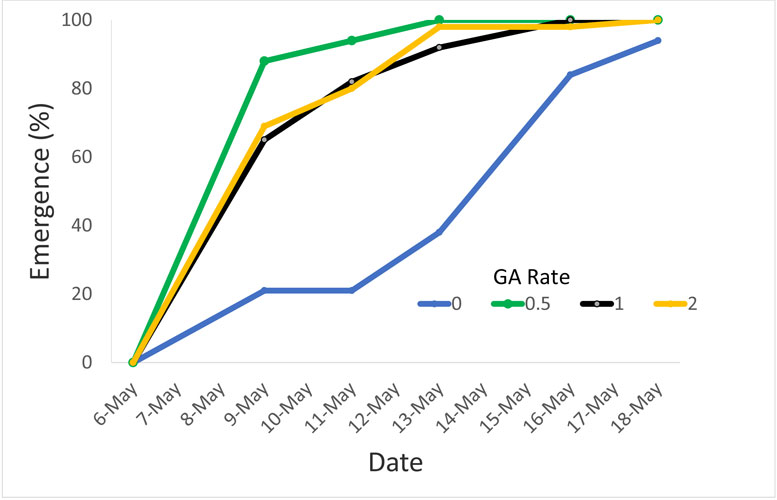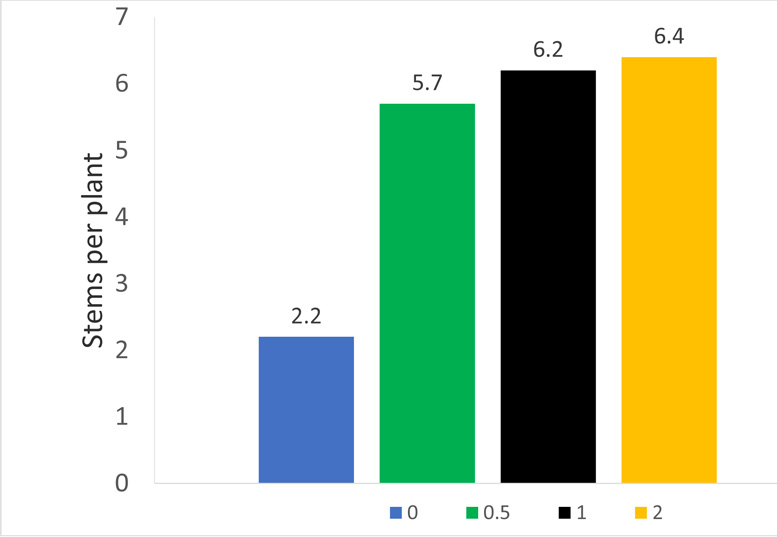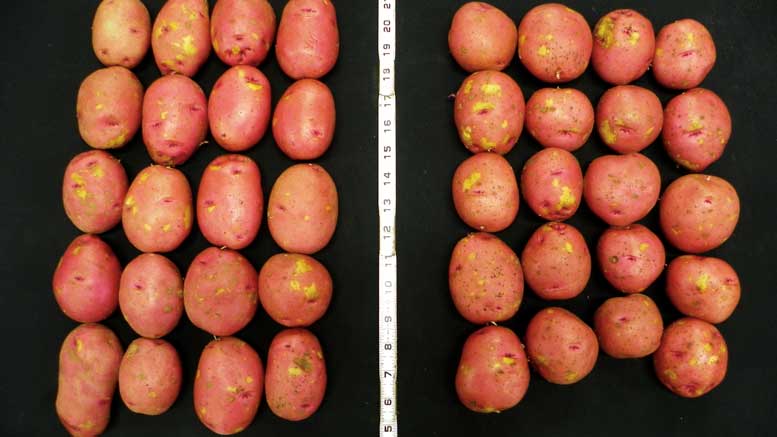|
Click to listen to this article
|
By Mike Thornton, Professor of Plant Sciences, University of Idaho
Potato yield and tuber size distribution are both strongly impacted by environmental conditions and management practices. Size distribution is becoming an increasingly important factor in economic returns as all market sectors incentivize growers to produce tubers in the optimum size range. Nowhere is this more important than in the specialty potato market, where the returns vary greatly based on size class. For example, market prices for tubers in the “C” size class were recently about double compared to those in the “A” class.

One way to manipulate size distribution to get more yield in the most valuable categories is to adjust stem number by application of plant growth regulators. For the past three years, we have been studying the response of the red potato variety Chieftain to two commercially available plant growth regulators that were applied to seed. ProGibb 4% (a gibberellin) is labeled to break dormancy and promote uniform emergence, while Rejuvenate Seed Treatment (an auxin) helps restore apical dominance in aged seed and control stem number. We applied the ProGibb 4% at rates of 0 (water check), 0.5, 1 and 2 ml per ton of seed alone or in combination with 4 ml (0.13 fluid oz) of Rejuvenate. The applications were made in a total spray volume of 0.5 gallons per ton immediately after the seed was cut.

The response to these growth regulator treatments was apparent as soon as the plants started to emerge. ProGibb applications reduced the time to emergence by about seven days compared to the water check (Fig. 1). ProGibb also more than doubled stem number per plant (Fig. 2). Adding Rejuvenate had relatively little impact on emergence rate but tended to reduce stem number per plant by about half a stem compared to what was seen with ProGibb alone. The number of tubers per plant pretty much mirrored the changes in stem number, with higher rates of ProGibb producing the most tubers per plant and Rejuvenate reducing tuber number very slightly. The net result was that ProGibb had the most impact on tuber size distribution at final harvest. For example, almost 90 percent of the total yield in the water check treatment was in the “A” size class, while the 0.5 ml/ton rate of ProGibb reduced the proportion of “A”s by about one third and doubled the proportion of “B”s and “C”s (Fig. 3).

That all sounds great if you are looking to increase tuber number so that your crop produces more small red potatoes that command higher prices. However, not all the effects of growth regulator applications were positive. The two highest rates of ProGibb caused a lot of deformed stems to emerge that took several weeks to grow out of those symptoms. This delayed growth resulted in about a 10 percent reduction in yield (40 to 50 cwt/acre) at the higher application rates compared to the check. The tubers were also slightly elongated and not the typical round shape that buyers expect. In our studies, Rejuvenate helped moderate the effects of ProGibb, and it seems advisable to consider using both products together initially until finding the exact combination that works best for a given situation.

After completing this research, we can confidently say that when used at the optimum rate, growth regulators can do desirable things such as speed emergence, optimize stem number and tuber set and, as a result, increase payable yield. However, when applied at too high a rate, they can have negative effects such as slowing plant development, causing deformed tubers and reducing yield. In the next few years, we plan to study how growth regulators can be used in combination with other management tools such as plant spacing and vine kill date to optimize both tuber size distribution and economic returns for specialty potatoes.

